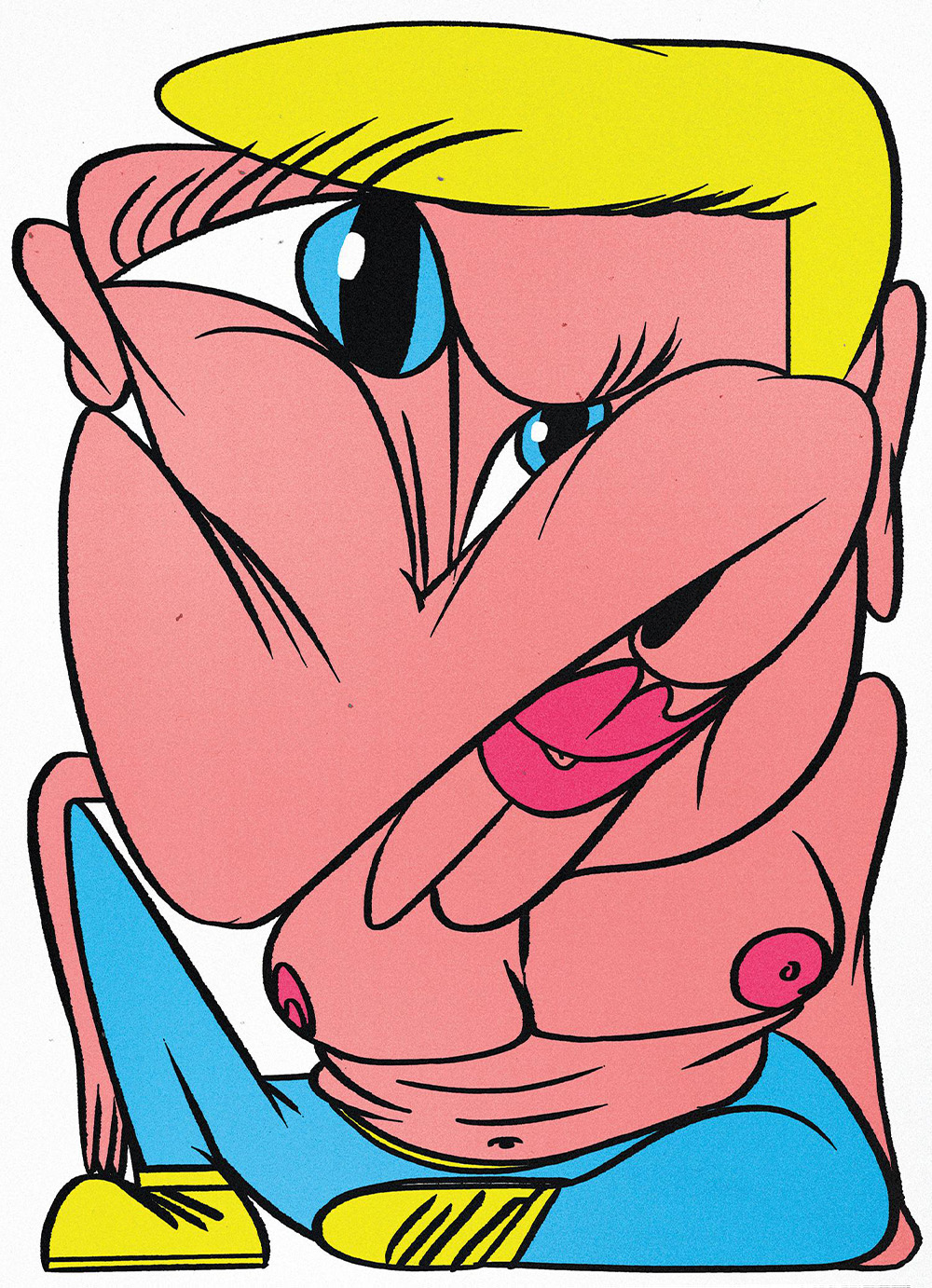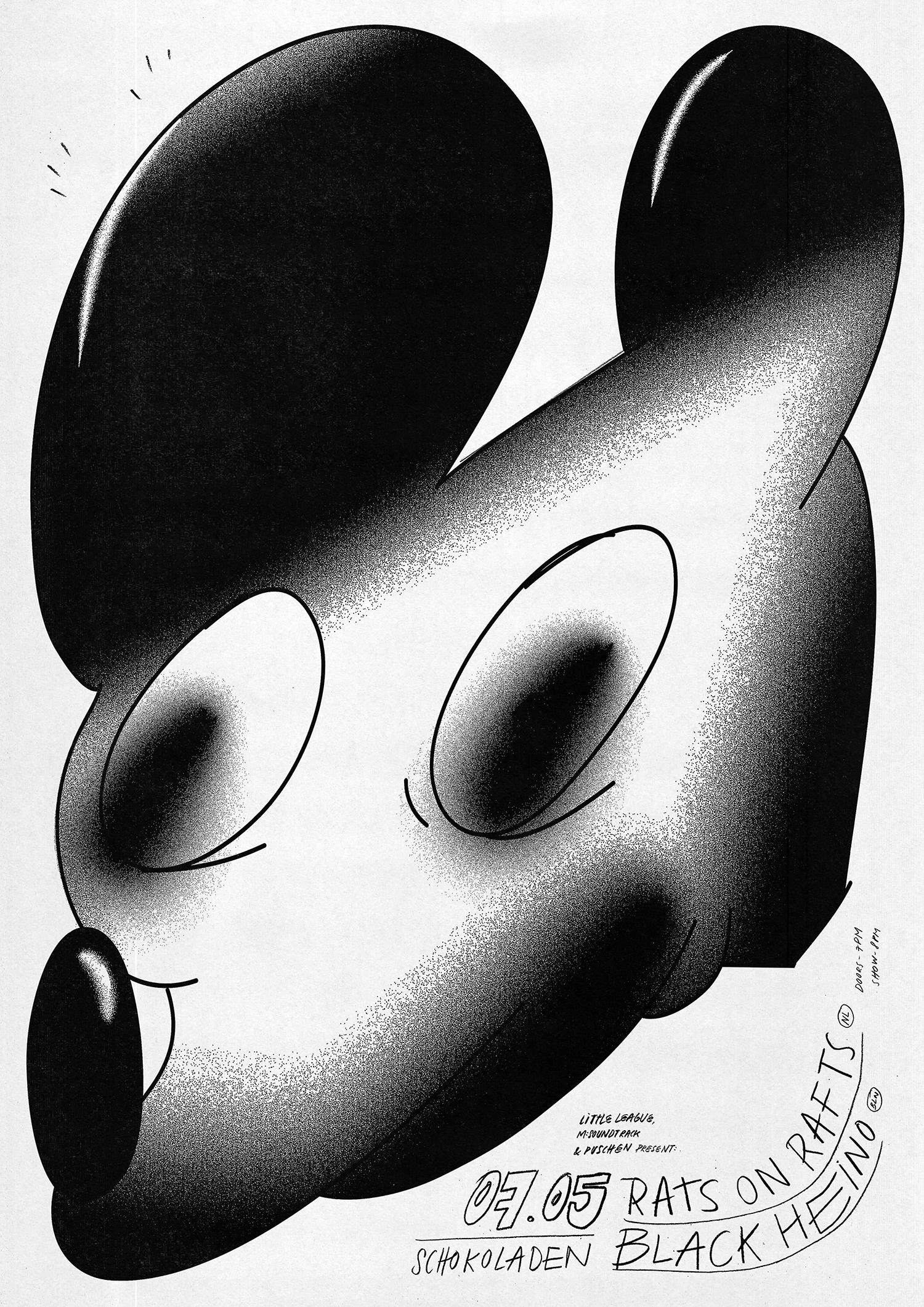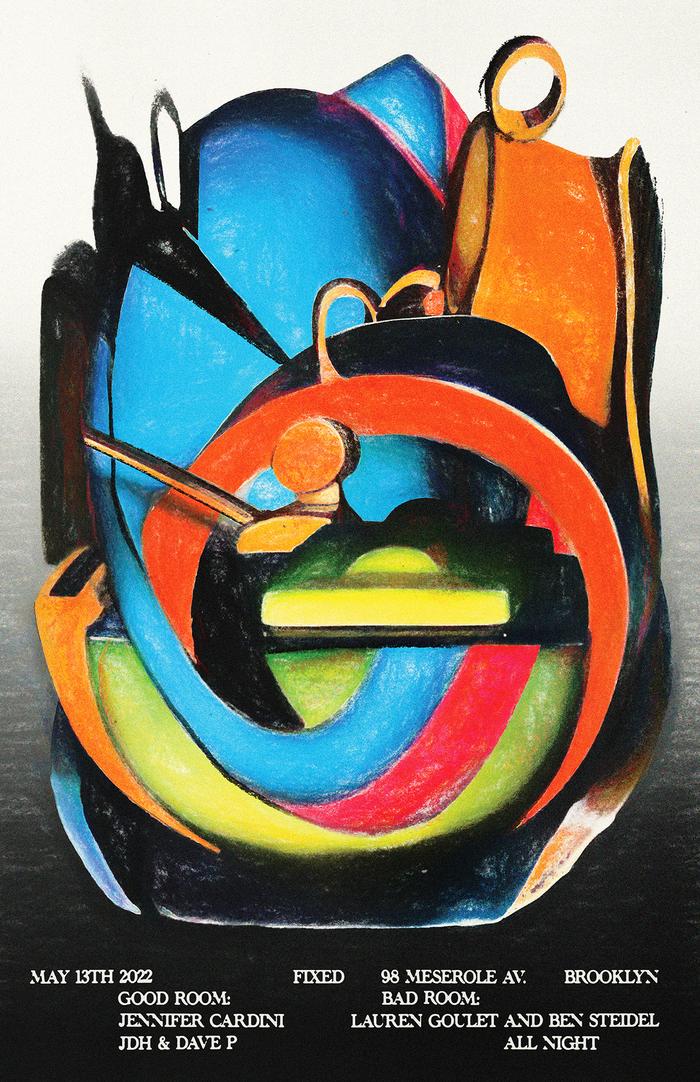
Bráulio Amado:
The New York BAD Guy
If you like to follow novelty posters and graphics on Instagram, you may also find Bráulio Amado's highly recognizable work among them. Bráulio Amado︎︎︎ is an illustrator, graphic designer from Portugal, and he has been based in New York for many years. His wickedly funny, hilarious, and bold graffiti seems to be one of the most recognizable impressions of New York; he even named his studio BAD STUDIO︎︎︎ (capitalize from Bráulio Amado Design) to help people remember his name.
Before being a freelancer, he worked for Pentagram, Bloomberg, and his work has been published in the New York Times, Businessweek, and WIRED. Also, he has collaborated extensively with artists and musicians, and in recent years has been publishing books, running community art and design education in NYC, and co-running the online shop Sixth Street Haunted House︎︎︎ (SSHH).
Your graphic work style is unique. We observe that there is a sense of consistency in all your work. Would you mind sharing pieces of your works that make you confirm that your style progressed to a more mature one?
I feel like I’m always trying to push my work somewhere new. Not sure if mature is the right word, I think I’m more excited about reaching something different rather than something perfect? But recently I have been trying a mix of AI, digital and hand painting, and it feels somewhat... adult?
I’m a designer and illustrator, or a commercial artist as they used to call designers back in the day. I like reacting to a briefing from a client. But I am indeed influenced by art, paintings, sculptures, and whatnot. I just feel like my work makes more sense in the design world rather than the art scene?


Did you face any challenges when you created such a recognizable and overpowering style in your work at Bloomberg︎︎︎ and Pentagram︎︎︎? Could you share any impressive feedback from your previous collaborators in these two companies?
Pentagram was my very first job, so I was still trying to figure out what I wanted to do. But Bloomberg Businessweek was definitely a very important place for me — made me grow as a designer quite a bit. Was all thanks to a group of designers that were already there before me — Richard Turley, Tracy Ma, Shawn Hasto, Christopher Nosenzo, Rob Vargas, Jaci Kessler, Lee Wilson, Chandra Illick, and many more; their feedback and their own work were quite influential to what I do nowadays.
What do you think your work reflects about New York?
New York has a very rich art history, so I feel like the city itself definitely influences my work. Hopefully, that’s visible in the work I do and somewhat reflects the importance it has to me.


We'd like to know more about the part of arts education you're doing in the community now, and if you'd like, we'd like you to share these.
I’m from Portugal, where education is much different (and cheaper) than here in the USA.
Me and my partner felt like there weren't enough creative spaces in NYC, so we decided to start one. Sadly we had to close the store and classroom due to covid. Operating-online only for now.
Also, I wouldn't call ourselves (SSHH) a traditional educational space? So we try to be creative with whatever difficulties we face.
Your work and stories are a great encouragement to many Taiwanese who are still exploring their creative language. Is there anything you would like to say to them?
Experiment! Don't be an asshole. Work with other people. Go outside your bubble. Study. Learn. Have fun.
Interviewed by Jeter Weng.
Text: Bráulio Amado, F. P..
Published: May 17, 2021. Last Updated: August 23, 2022.
Copyright © 2019–2024 Taipei Art Direction & Design Assoc. All rights reserved.
Website designed and developed by Yaode JN︎︎︎. Running on Cargo︎︎︎.
Website designed and developed by Yaode JN︎︎︎. Running on Cargo︎︎︎.
Copyright © 2022 Taipei Art Direction & Design Assoc. All rights reserved.
Website designed and developed by Yaode JN︎︎︎. Running on Cargo︎︎︎
Website designed and developed by Yaode JN︎︎︎. Running on Cargo︎︎︎
